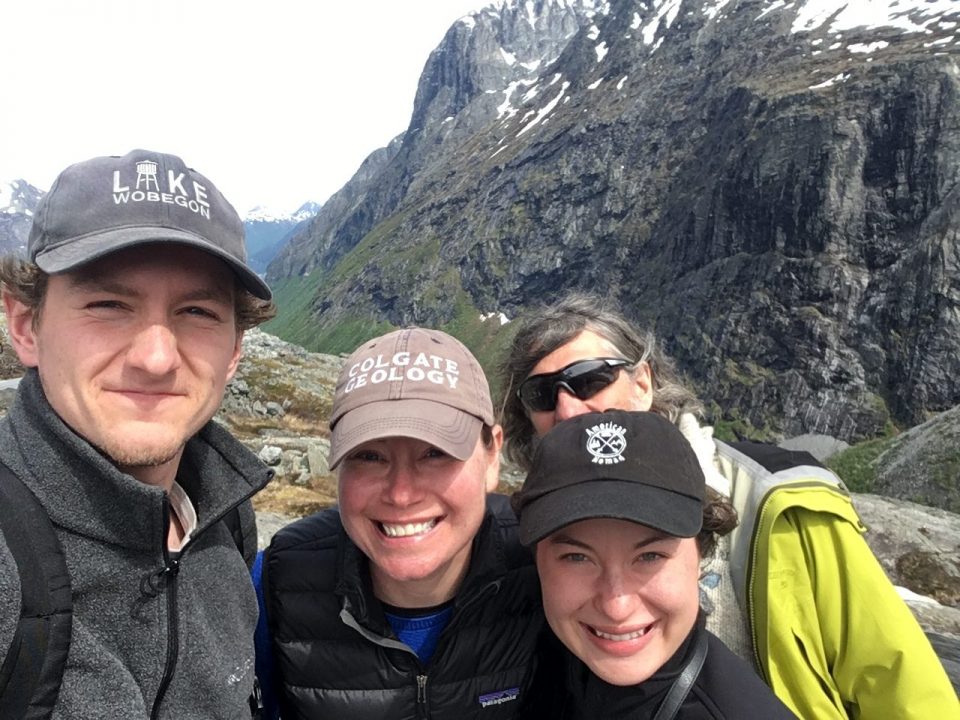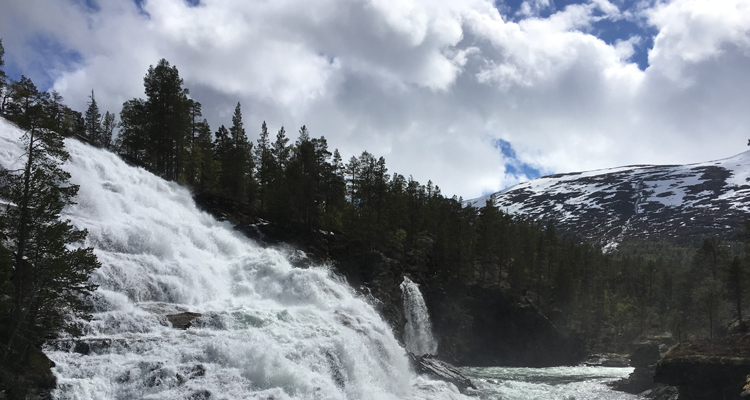Norway is something of a geological mystery.
It has high and rugged mountainous terrain, which a geologist would expect to find in a place where there is a lot of activity between tectonic plates. Here’s the mysterious part: Norway has been isolated from that sort of activity for more than 50 million years. How is that possible?
Jeni McDermott, assistant professor in the Department of Geology, and her students are trying to answer that. Funded by a grant from the American Chemical Society Petroleum Research Fund, she took Elliott Allen ’19 and Jenna Abrahamson ’19 to Norway this summer to continue research.
“This is research that nobody’s done before,” McDermott said. “There isn’t a known answer. So, I’m looking for students who can work within that world, who are comfortable with critically thinking about ideas.”
Reading rivers
McDermott has looked at the Norway question for the past two years. Her methodology focuses on the behaviors of rivers: When there is behavior that is different from the expected, she seeks what happened to have caused such a change. Rivers are sensitive to tectonic motions, so McDermott hopes to “read” the rivers to reveal what tectonic motions caused the mountainous terrain in Norway.
“I basically chase waterfalls for a living,” McDermott said. “I stand there and realize there’s this huge disturbance – this waterfall that’s breathtakingly gorgeous, and has tons of water powerfully flowing over it. It’s my job to untangle why that is there and what it’s trying to say about the landscape evolution. That’s always a little humbling.”

(From left): Elliott Allen '19, Jeni McDermott, Jenna Abrahamson '19 and Tim Redfield, Norwegian Geological Survey collaborator
Allen and Abrahamson both become interested in working with McDermott after they lived in the Sustainability Living Learning Community during their first year at St. Thomas and did geology research on a trip to Nevada.
For the Norway trip, they received Young Scholars Grants and began by studying what McDermott and two previous students had collected on a prior trip, as well as examining images on Google Earth. A lot of new technology is available within the field of geology, such as GIS (Geographic Information Systems). McDermott said balancing all that technology with fieldwork is key.
“A lot of things become much clearer when you can put your hands on it, put your feet on it,” McDermott said. “You’re observing these processes happening right in front of you, and the small-scale stuff you see that day relates to the larger-scale things that have occurred over geological time. ... Your field work is limited by your inability to see things from a grand view, and your grand-view computer work is limited by not being able to touch and see things.”
Serving as collaborators
Allen’s part of the project focuses on river reorganization, which is when one river cuts back and captures the other, usually resulting in the reversal of the stream.
“The ultimate goal of that will be to reconstruct what the rivers used to look like and what happened to get them to their current configuration,” McDermott said.
McDermott emphasized that because there aren't known answers to the questions they’re asking, students problem solve and collaborate on the work.
“Being in the field with people, you can’t help but become closer,” McDermott said. “It helps the science when you can trust each other like that.”
That opportunity was something that both Allen and Abrahamson appreciated.
“Working directly with renowned geologists means the level of conversation was higher,” said Allen, who said the experience so far has been incredibly valuable because it has given him a real sense of what he can do in the field.
“Probably the best part of the day was coming back at the end, after being out in the field, having dinner and just recapping the day,” said Abrahamson, who is focusing on an area called Surnadal where there's an unusual and large gorge.
The three of them spent a little over two weeks in the field this summer and, having returned with fresh data, measurements and samples, they’ll spend the rest of the summer breaking down the information and getting a little closer to understanding Norway.
“It’s such an incredible opportunity for students like me and my peers ... to do research like this,” Abrahamson said. “I would definitely encourage students to research that out. It’s made my beginning at St. Thomas and got me involved with the department right away.”







